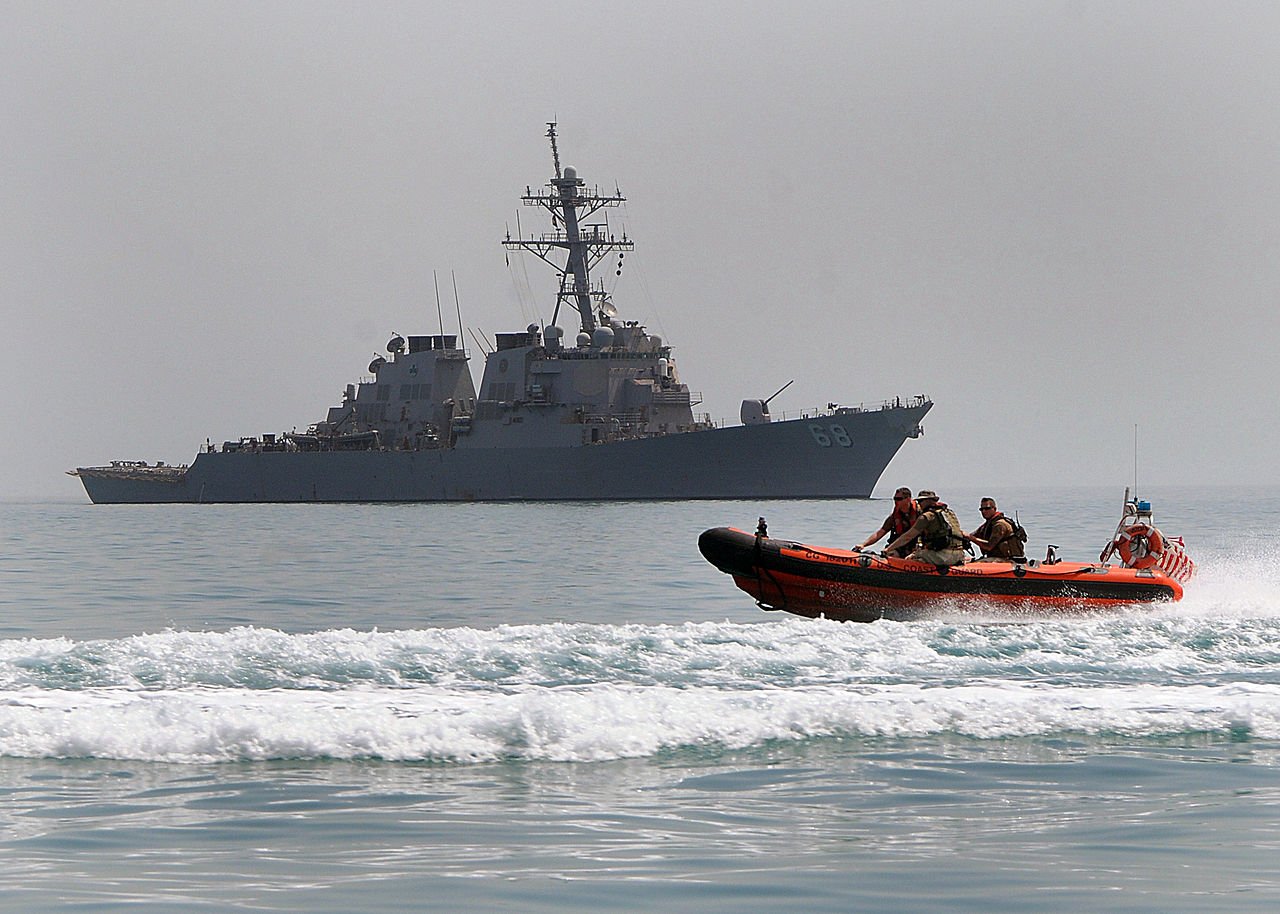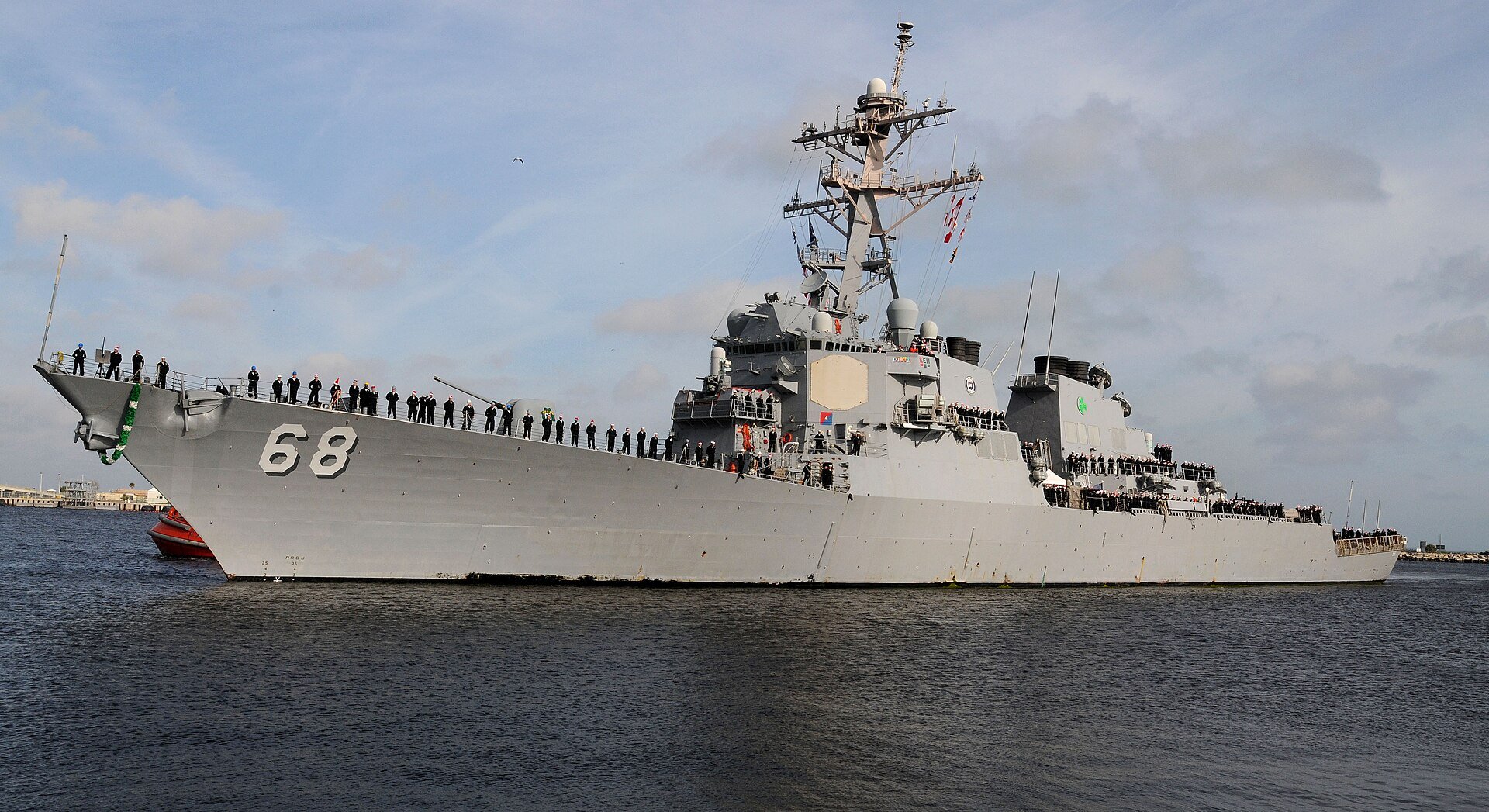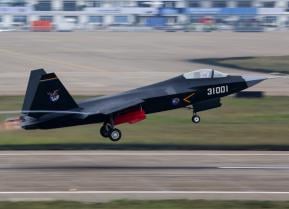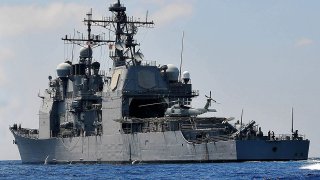The Arleigh Burke-Class Destroyer Is One Powerful U.S. Navy Warship
The Arleigh Burke first participated in combat in 1996, when the USS Laboon and USS Russell launched Tomahawk Land Attack Missiles against targets in Iraq during Operation Desert Fox.
First commissioned in 1991, the Arleigh Burke-class destroyer is still a vital component of the US Navy.
In fact, 73 Arleigh Burkes have entered active duty since the class’s inception, making the ship numerically prominent.
And with ten more Arleigh Burkes being built (and nine more on order), we can expect the Arleigh Burke to remain a staple of the US Navy force structure for the foreseeable future.
Arleigh Burke-Class Destroyer Specs
The Arleigh Burke is large. Over 500 feet long, with a 66-foot beam and a 31-foot draft. Only the Spruance, Kidd, and Zumwalt destroyers are longer than the Arleigh Burke – which was designed with a new large, water-plane area-hill form distinct for its wide, flaring bow.
The flared bow allows for high speeds in high sea states and for improve seakeeping ability.
The Arleigh Burke was also designed with a reduced radar signature; to improve the Arleigh Burke’s stealth characteristics, the ship was built with angled surfaces instead of the vertical surfaces that adorn most ships. The Arleigh Burke also incorporates a raked tripod mainmast, which further reduces the ship’s radar signature.
The Arleigh Burke is made with an all-steel hull (only the mast is made of aluminum) – after incorporating lessons learned from the Ticonderoga-class cruiser. The Ticonderoga, see, was built with a hull combined of both steel and aluminum (which is lighter than steel) in an effort to reduce the ship’s weight.
But as the shipbuilder’s eventually found, the lighter aluminum was more vulnerable to cracking.
And, aluminum proved to be less fire-resistant than steel – as demonstrated when a fire gutted the USS Belknap in 1975, and when aluminum-built British ships were fire ravaged during the 1982 Falklands War.
So, while designing the Arleigh Burke through the 1980s, shipbuilders decided to accept the heavier weight of steel-made hulls and cut out the relatively vulnerable aluminum. Actually, designers doubled down on steel – crafting the Arleigh Burke’s vital areas with double-spaced steel layers for added protection against anti-ship missiles.

The double-spaced steel isn’t the only defense measures employed on the Arleigh Burke. The destroyer is also outfitted with AN/SLQ-32 electronic warfare suits that can jam targeting and provide anti-ship missile guidance.
Additionally, the Arleigh Burke features Mark 36 infrared and chaff decoy launchers, plus Nulka decoy launchers, for defense against incoming anti-ship missiles. To defend against incoming torpedoes, the Arleigh Burke features two Nixie towed countermeasures. And to prevent detection in the first place, the destroyer has Prairie-Maskers fitted near the propellors to reduce radiated noise.
Built for modern warfare, the Arleigh Burke is also the first US warship designed with an air-filtration system for defense against nuclear, biological, and chemical warfare (NBC). In addition to the air-filtration system, the destroyer features air-locked hatches, pressurized compartments, and an external countermeasure washdown system – all to defend against NBC.
Yet, despite all the defensive hardware, the Arleigh Burke is a destroyer, which as the namesake implies, is ultimately about an offensive posture.

The Weaponry
The Arleigh Burke was designed to participate in a variety of missions. Accordingly, the ship is outfitted with myriad weaponry – everything from anti-aircraft missiles, land attack missiles, ship-to-ship missiles, and anti-submarine systems. Indeed, the Arleigh Burke is heavily armed.
For enhanced situational awareness, the Arleigh Burke relies upon the Aegis Combat System, which synthesizes input from computers and radars to target and destroy enemy targets. The Aegis relies upon the Arleigh Burke’s radar systems: AN/SPY-1D passive electronically scanned array, which allows for continuous target tracking and scanning. For submarine detection, the Aegis is integrated with the Arleigh Burke’s AN/SQQ-89 ASW system.
In addition to the futuristic, computer-based tech, the Arleigh Burke also incorporates relatively traditional weaponry in the form of standard naval guns. On the forward deck the destroyer features a 5-inch Mark 45 gun, which can be used in anti-ship, anti-air, and naval gunfire support roles while firing up to 20 rounds per minute with a range of 13 nautical miles.
In Action
The Arleigh Burke first participated in combat in 1996, when the USS Laboon and USS Russell launched Tomahawk Land Attack Missiles against targets in Iraq during Operation Desert Fox.
Again, in 1998, Arleigh Burke destroyers launched Tomahawks in support of Operation Desert Fox. And during Operation Iraqi Freedom, the Arleigh Burke was called upon the join carrier strike groups and, occasionally, launch Tomahawks against ground targets.
But the Arleigh Burke may be best remembered for the infamous October 2000 bombing of the USS Cole, in which an Arleigh Burke was bombed while docked in Yemen. The blast killed 17 crew members. Facilitating the attack: al-Qaeda, in what is now considered a harbinger of the 9/11 attacks.
The Future
The Navy is beginning to develop a replacement for the Arleigh Burke.
Known as the “Future Surface Combatant,” the program will incorporate cutting-edge technologies like lasers and onboard-power generation systems and next-generation weapons. T
he new ship is expected to enter service in the 2030s. But new weapons programs have a way of getting themselves delayed.
Expect the Arleigh Burke to stick around for a while.
About the Author
Harrison Kass is the Senior Editor and opinion writer at 19FortyFive. An attorney, pilot, guitarist, and minor pro hockey player, Harrison joined the US Air Force as a Pilot Trainee but was medically discharged. Harrison holds a BA from Lake Forest College, a JD from the University of Oregon, and an MA from New York University. Harrison listens to Dokken.


